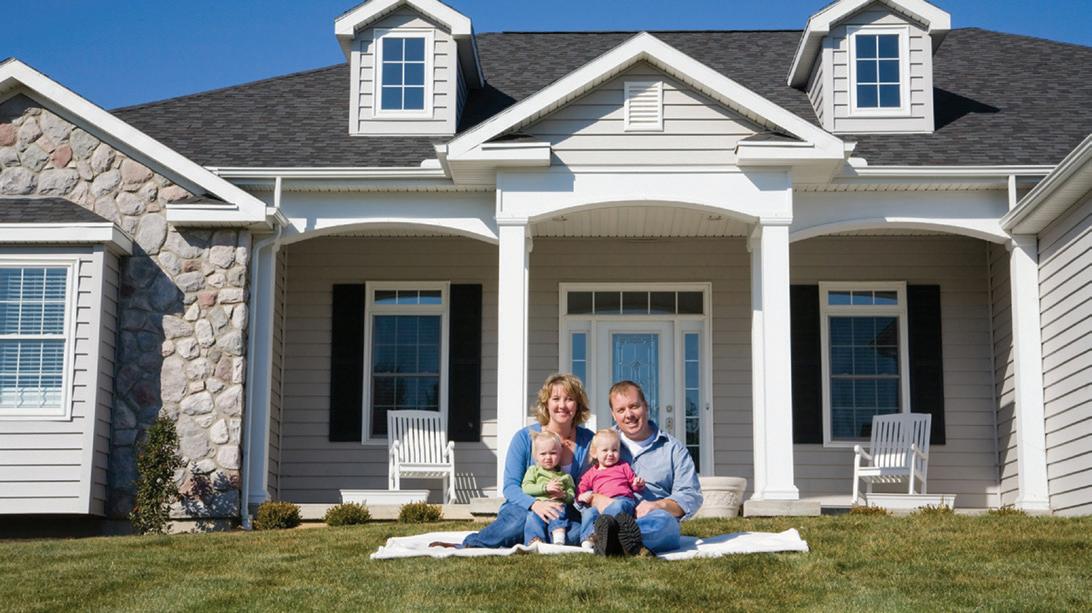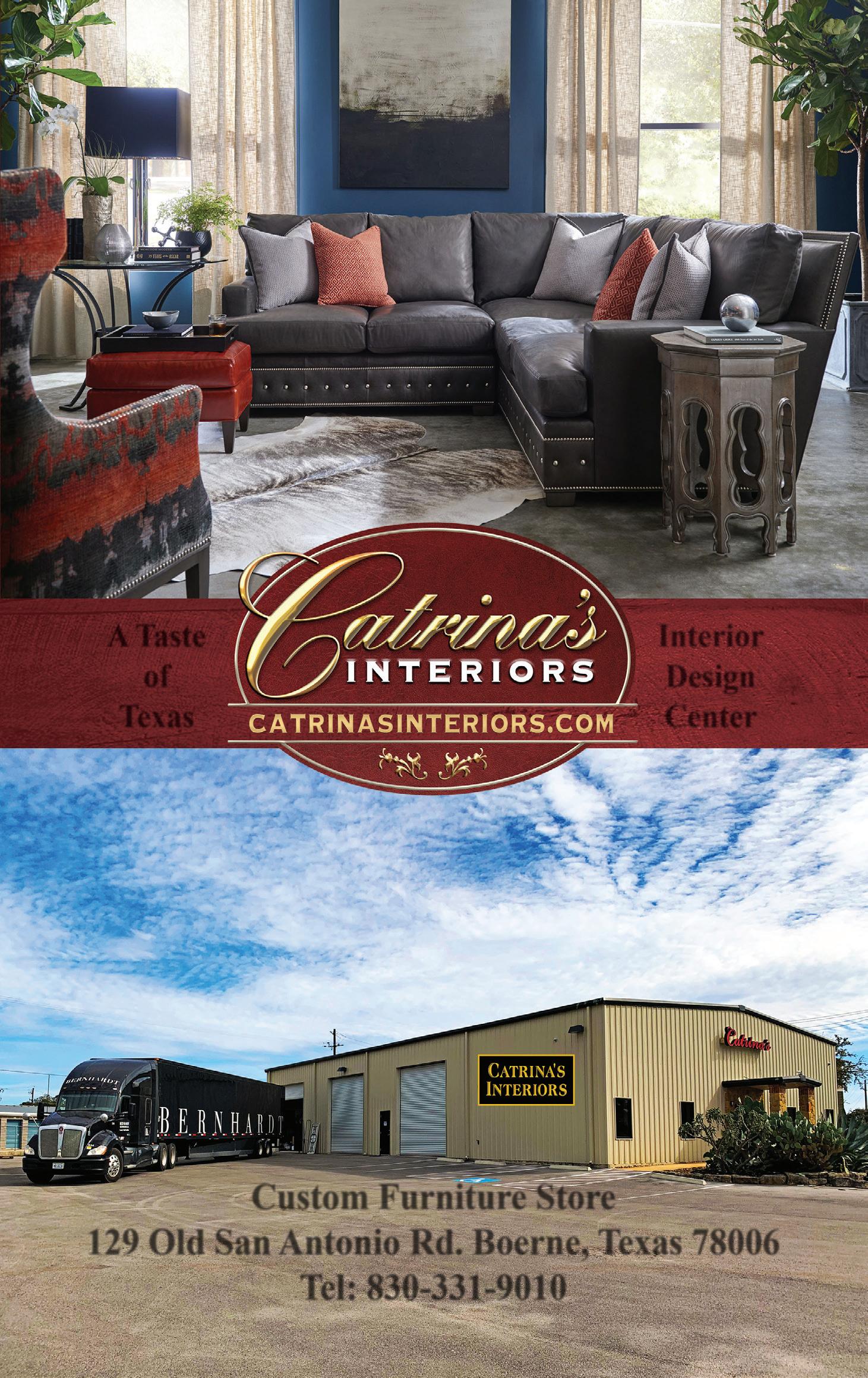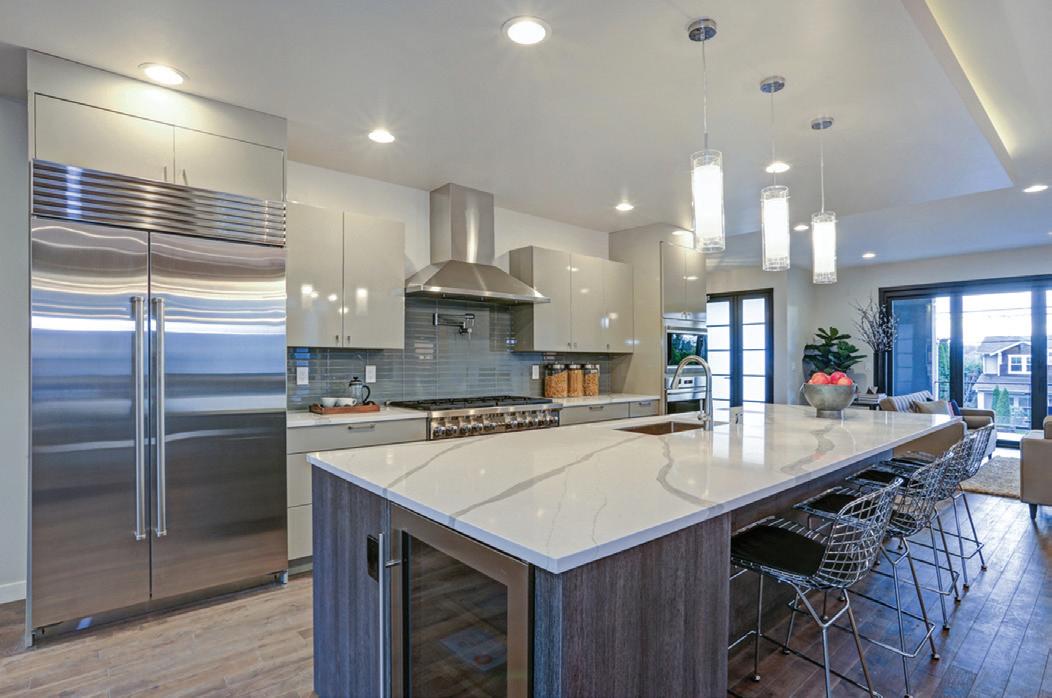
6 minute read
Real Estate
Relocating to Kendall County
Advice from an Expert
With San Antonio ranking as one of the growing, there are many nearby communities that help support its growth. One of the most popular is Kendall County, looking to relocate to the area. While a strong job market and a surplus of people to serve is enticing to individuals and families, relocating is not always as simple as a “quick move”—but fortunately, there are many fantastic local resources, including relocation experts, to help transferees make their move as smooth as possible. One leading relocation expert in the area is Phyllis Browning Company’s Relocation Director, Robin Morris, who provided the following insight regarding her experience in relocating professionals to the area:
Q&A Transferees are often concerned with the disruption a move will have on their families. What do you do to help set them at ease? I start by asking about the move, who will be relocating (children, spouse, etc.) and what is the most important part of their move (schools, area, price point, etc.). It is imperative to listen to what the transferees are saying during the initial conversation. If children are involved in the move, there with that many relocations, I have become a personal expert as well as a professional one when it comes to making sure my children are excited about the move, as well.
How can a transferee decide on their preferred area without knowing the city or surrounding area? I try to give transferees a vocal tour of the any other questions regarding their move. I suggest a tour to help them get a feel for the area where they will be working. If time does not permit, I suggest that the assigned agent spends time going over a map before have an idea about the infrastructure and layout of the area where they are moving. what is covered by their employer regarding relocation services? counselor what will be covered so they understand what is expected on both ends because surprises are never good. Every transferee’s move is different; therefore, they need to discuss and understand their package before they start the process.
How should one begin the process of looking for a new home if they are unsure of the cost-of-living difference and they do not know what they can afford? Before you start looking at homes, it is best to speak with a mortgage lender to help you better understand what you can afford at your new location. There are also internet tools such as CNN’s and Best Places’ costof-living calculators. These sites will give you your current location and your new location. Another resource is your moving counselor or new human resource department. I also advise to seek out employees that may have moved in a similar situation, as they can share their experiences.
Finding a home
Shopping for a new home is exciting but can also cause some anxiety. Doing your homework in advance can better prepare you for making this major decision, and take some of that anxiety away. IDENTIFY YOUR PREFERENCES FIRST Pay close attention suit your preferences. Sit down with the members of your household to discuss your preferences and available options. FINANCING YOUR HOME cess is determining how much you can process goes smoothly, buyers should consider pre-qualifying for a mortgage place before shopping for a new home. PRIORITIZING MOST WANTED FEATURES An easy way to organize your thoughts is to write each separate feature that you want on an index card, and arrange the cards in order of importance. If you like to cook, you may want a home with a large, well-equipped kitchen. Or you may settle for a small kitchen, so that you can have extra space Some home buyers seek large, open interior spaces, while others prefer traditional rooms that afford more privacy. If you plan space on your site for such expansion and whether such additions are permitted. SELECTING THE TYPE OF HOME With a single-family home in a development, you’ll be responsible for your own yard and home, but may be restricted to certain design elements or other regulations if there is a home owners association.
Custom homes are one-of-a-kind creations that can come with luxury upgrades and unique architectural design. and architecture, buyers typically choose their ideal location and environment.
Another option is a home in a multi-unit complex, such as a townhouse cluster. If you own the home, you and your neighbors likely own the common elements, such as the land around the complex, the parking areas, building exteriors, hallways, utility pipes and recreational facilities. An owners association is usually responsible for maintaining the jointly owned elements. The day-today business of the complex is often handled by a management company. STARTING YOUR HOUSE HUNT Now that you know the type of home and features you are looking for, and how much home you can afford, you’re ready to begin searching for your perfect home. Whether you use a realtor a builder to build a new home, you’ll be more focused with your search.



Custom homes are oneof-a-kind, upscale creations that can include luxury upgrades and unique architectural design. Buyers choose the location and the custom home design incorporates elements of the landscape, whether it’s a view, a water feature, or the natural beauty of the Texas Hill Country.
CUSTOM VS. PRODUCTION HOMES Production builders build communities by limiting designs to a group of select home styles on lots they’ve purchased themselves. Custom builders tend to build on land owned by the customer and customize each design. Custom builders spend more time on each project and often work on fewer homes a year than production builders. AMENITIES Home owners like features that will improve their lifestyle. Custom homes can include yoga studios, resistance pools rooms and theaters can be added for fun; screened-in porches or warm hearths can make your home feel cozy and welcoming. In a world where there’s an app for everything, buyers are beginning to expect a custom home to do more and be “smarter.” You can control many features in your home using a phone, including energy usage, security systems, lighting and the music playing in each room. MULTIGENERATIONAL LIVING Whether it’s aging parents moving in with their adult children or young adults living back with mom and dad, multi needs when it comes to a home. Multigenerational families often build homes that include the traditional mother-in-law suite or a locked-off living space within the home. These apartment-style spaces can have their own kitchenette, full bathroom and living areas to provide a sense of privacy and independence. UNIVERSAL DESIGN Universal Design includes features like wider doors, lower countertops and fewer stairs to create a home that everyone can enjoy comfortably. An accessible home allows owners to age in place, prolonging their ability to stay in the house independently and can also increase value by opening the market to any future buyer, despite age, stature or ability. GREEN BUILDING Many custom builders are embracing green building elements like solar panels, water-saving appliances, in and the use of renewable or recycled building materials are all popular tech Custom builders allow buyers to include a wide range of green products and give them the opportunity to weigh each stylish, comfortable, but also eco-friendly.



DECORATE YOUR HOME WITH THE SAVINGS FROM YOUR HOME INSURANCE.

Contact me for a free coverage review and no-obligation quote.
Jim Boren Lead Sales Advisor 9901 Interstate Hwy 10 Ste 405 Colonnade I San Antonio, TX 78230 (210) 563-1262
James.BorenJr@LibertyMutual.com











